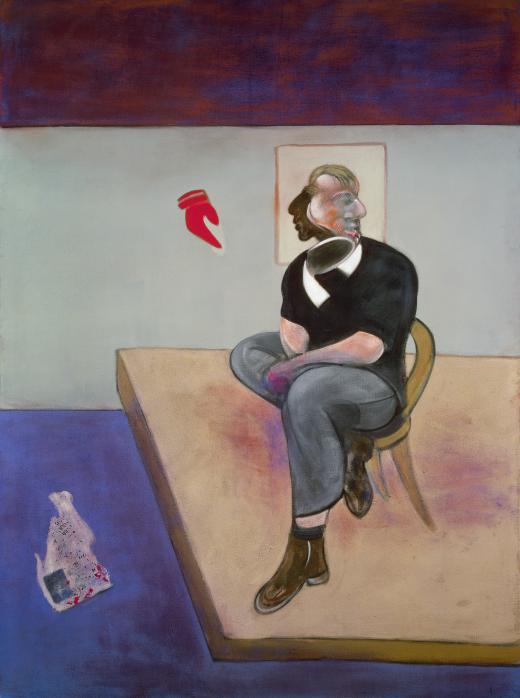LIFE ESSENCE
“This is the artist’s privilege—to be ageless. Passion keeps you young, and passion and liberty are so seductive. When I paint I am ageless, I just have the pleasure or the difficulty of painting.”
Francis Bacon*
In the late 1970s and early 1980s, Francis Bacon, now a septuagenarian, reintroduced into his paintings motifs such as the bull, and genres such as the landscape, which had always been secondary in his works. He had painted few landscapes prior to 1978, most of them in the 1940s and 1950s, and many of them still showed traces of humans or animals. In this last stage of his career, his works were pared down; the landscape elements are isolated from their surroundings and confined to the boundaries that the artist defines. In this way, Bacon tackled landscape painting similar to the way he dealt with the human figure. Thus, he “encased” the wave that appears in Painting March (1985) and the road in Street Scene (with Car in Distance).
The portraits from this late period are increasingly stripped down. The painter actually eliminated elements he had painted in order to diminish the visual references in the composition and focus attention on the main figure. Some of these works were made with aerosol paint, which allowed Bacon to create textures never before seen in his output. These paintings are divided into those rendered with bright colors and those which primarily use dull, grayish tones.
Bulls once again appear in his later works. His iconography harks back to artists like Goya and Picasso, as well as to poet Federico García Lorca and writer Michel Leiris, and it specifically references bullfights.
Francis Bacon died in Madrid in 1992, just a short distance from the Museo del Prado, the place where he had encountered many of the great masters he had admired, and which he had visited for the last time in 1991 to see Velázquez’s works. Transgressive in both his life and his art, Bacon broke down many barriers that were deeply entrenched at the time, placing human beings in front of a mirror in which we could see ourselves in a raw, violent way.
* “Francis Bacon: I painted to be loved”, interview by Francis Giacobetti conducted on February 1992, published in The Art Newspaper, no. 137, June 2003, pp. 28–29.

